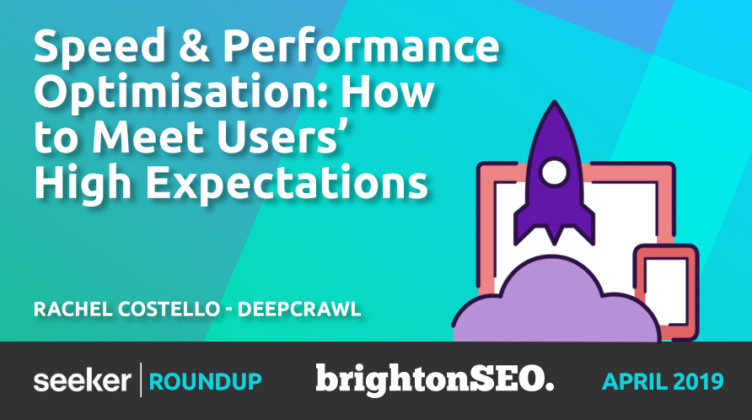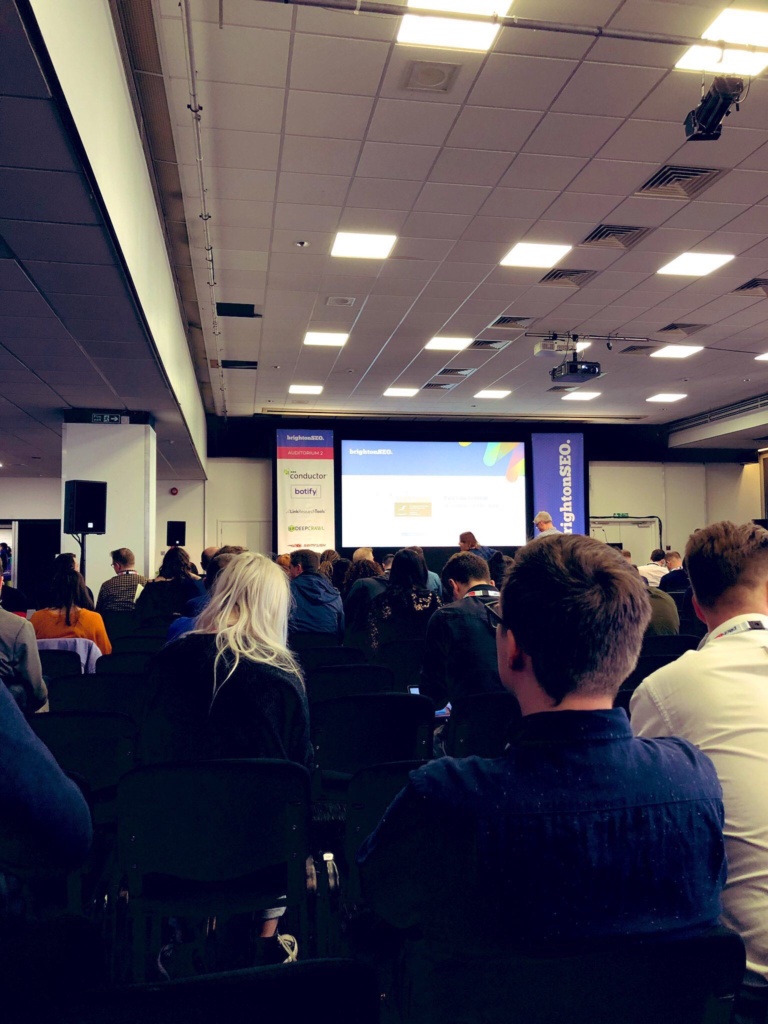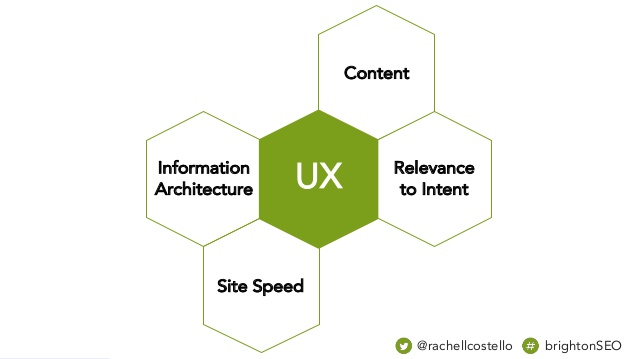
Below is a roundup of Rachel Costello’s BrightonSEO talk which was focused on website speed optimisation and how to create ‘perceived speed’ to keep users on-site. We will cover a variety of tools and tactics to improve the performance of your website.
Overview
- Speaker: Rachel Costello
- Job role and company: Technical SEO & Content Manager at DeepCrawl
- Twitter profile: @rachellcostello
- Website: https://www.deepcrawl.com/
- LinkedIn profile: https://uk.linkedin.com/in/rachel-costello
- Link to the slides:
A slow website limits your ranking potential: here’s how to optimise

In this talk, Rachel explained how UX is becoming a more and more important factor in SEO and to achieve top positions in 2019, site speed should be a major focus for all SEOs. You could have the best content in the world but with a slow website, you won’t be competitive in the SERPs.
The ‘best practice’ load time for a website is 3 seconds and it’s clear to see that the vast majority of UK industries are missing this mark.
One of the key issues highlighted is that we often test our site speed on the latest mobile devices and other high-end models however this doesn’t provide us with a true site speed average. Instead, we should be testing site speed on older models (as well as the latest devices) to ensure the site has high performance across the board.
You can even use the audience tab in Google Analytics to see device and browser data from your visitors, ensure you are optimising for these.
If you can’t achieve true speed, there is a little hack we can use to keep users on-site which Rachel refers to as ‘perceived speed’. This is where above the fold content loads before any other on-page content so the user believes they are looking at a fully loaded web page.
Consumers often blame their internet connection when a website fails to load, which is perhaps a relief for brands, but that still isn’t an excuse for poor load times.
Fave quote
“For meaningful performance optimisation, we need to feel empathy for our users”.
Potential impact on the industry
It’s clear that there is a lot more we could be doing to improve site speed as it’s often one of the most overlooked aspects of SEO. We can often get tunnel version when creating beautiful pieces of content for our sites, but this content will be severely limited in search if site speed isn’t optimised first.
There are plenty of tools available to help us optimise for speed, but often simply speaking to your dev team is the best place to start. Run some tests, clean unnecessary code and soon you may have a competitive advantage in the SERPs.

Key takeaways
- The ‘best practice’ load time for a website is 3 seconds
- A 1-second delay in mobile load times can reduce conversions by up to 20%
- Testing your site speed on a high-end mobile device won’t give you a true average, test older models too
- Use the audience tab in GA to view users’ device type and browser data
- Use perception speed to impress users (load above the fold content first)
- Personalise performance by connection, device and journey
- Tailor content to the user’s network (aka tell a browser to load a video for 4g connections but only an image for 3G)
- Use the tools mentioned below to optimise performance
- Speak to your dev team to see what’s possible for your site
